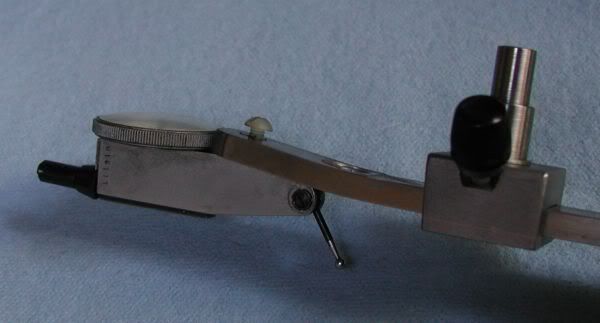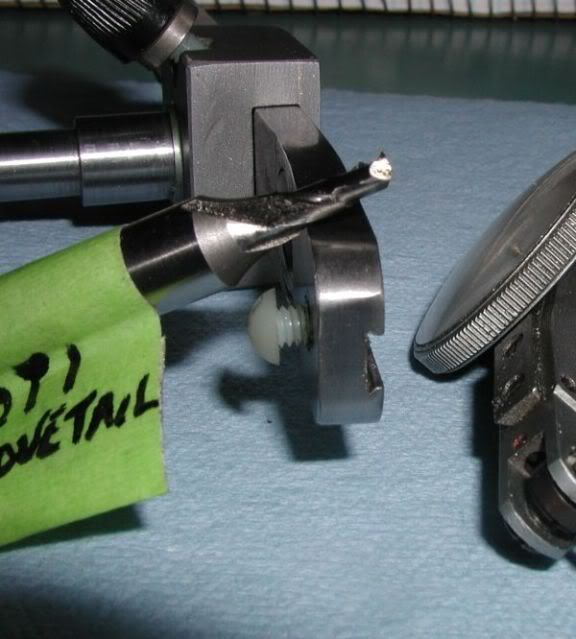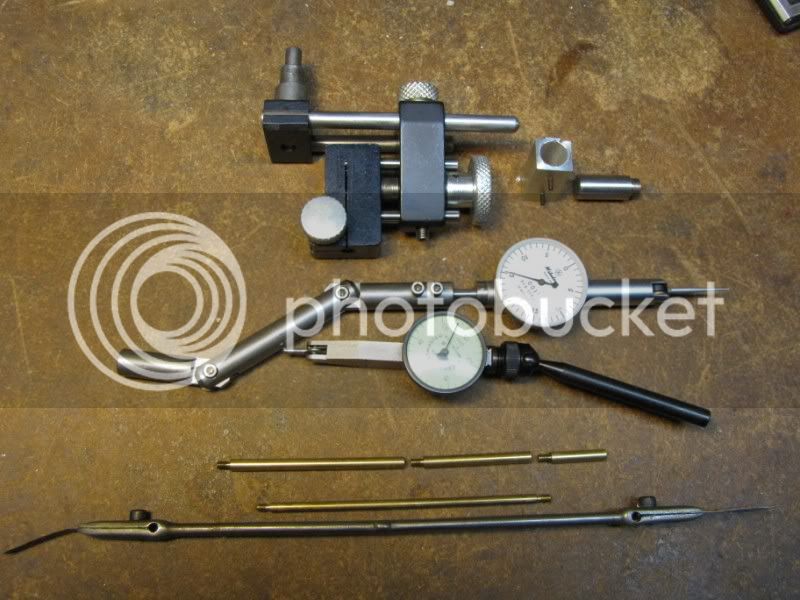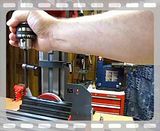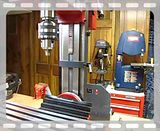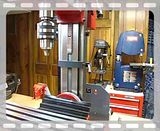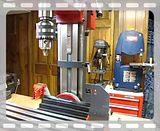mklotz
Well-Known Member
DI = Dial Indicator: plunger operates indicator needle to register motion of plunger.
Used to make direct measurements. A variety of tips are available...
http://www.use-enco.com/CGI/INSRIT?PMAKA=327-2904&PMPXNO=22508034&PARTPG=INLMK3
http://www.use-enco.com/CGI/INSRIT?PMAKA=605-4538&PMPXNO=943849&PARTPG=INLMK3
although you'll eventually want to have a 4-48 tap and die handy to make your own specialized tips and extenders - especially extenders. (A set of 1,2,4" extenders will get you any integer length to 7" - yes, binary works in the workshop.)
Some example tip uses...
ball tip - point contact on a rounded surface
flat tip - eliminate need to put DI exactly on center when measuring to a curved surface on the lathe
wire tip - to measure depths in narrow grooves or down small holes
DTI = Dial Test Indicator: A repositionable arm operates the indicator needle to register small increments of motion on the dial.
The variable geometry of the DTI arm makes them generally unsuitable for making actual lineal measurements. As the name suggested, they're used more for comparative measurements such as aligning or tramming. DIs are used for actual measurement (although they can be used for comparison - as in centering work in the 4jaw).
Don't use aluminum rods. Aluminum bends and dents too easily. Steel is a better and cheaper choice. Rather than setscrews use a split clamp drawn together with a SHCS. It will hold the rod more securely and will not mar it. Don't sweat the rust. Don't wash the oil off your hands until you need to use the restroom. The oil transfer will keep them from rusting.
The oil transfer will keep them from rusting.
Think about how you will attach the DTI. A picture of your DTI and the dovetail attachments you have for it will be useful in this discussion.
The block-and-arm design you describe will be useful for tramming the head where you need some sweep but it may not be the best thing for "in-close" jobs like centering on a hole.
I have a simple design that I built a long time ago. I'll try to take some pictures tomorrow and put them up. Plus there's my magnetic design which you've seen.
Does your DTI have a pin mount in addition to the dovetails? If it does, a simple chunk that can be gripped in the chuck with a series of offset holes may be all you need.
Whatever you design, try to ensure that it doesn't take up much z-axis headroom.
More when you've digested what I've said here...
Used to make direct measurements. A variety of tips are available...
http://www.use-enco.com/CGI/INSRIT?PMAKA=327-2904&PMPXNO=22508034&PARTPG=INLMK3
http://www.use-enco.com/CGI/INSRIT?PMAKA=605-4538&PMPXNO=943849&PARTPG=INLMK3
although you'll eventually want to have a 4-48 tap and die handy to make your own specialized tips and extenders - especially extenders. (A set of 1,2,4" extenders will get you any integer length to 7" - yes, binary works in the workshop.)
Some example tip uses...
ball tip - point contact on a rounded surface
flat tip - eliminate need to put DI exactly on center when measuring to a curved surface on the lathe
wire tip - to measure depths in narrow grooves or down small holes
DTI = Dial Test Indicator: A repositionable arm operates the indicator needle to register small increments of motion on the dial.
The variable geometry of the DTI arm makes them generally unsuitable for making actual lineal measurements. As the name suggested, they're used more for comparative measurements such as aligning or tramming. DIs are used for actual measurement (although they can be used for comparison - as in centering work in the 4jaw).
Don't use aluminum rods. Aluminum bends and dents too easily. Steel is a better and cheaper choice. Rather than setscrews use a split clamp drawn together with a SHCS. It will hold the rod more securely and will not mar it. Don't sweat the rust. Don't wash the oil off your hands until you need to use the restroom.
Think about how you will attach the DTI. A picture of your DTI and the dovetail attachments you have for it will be useful in this discussion.
The block-and-arm design you describe will be useful for tramming the head where you need some sweep but it may not be the best thing for "in-close" jobs like centering on a hole.
I have a simple design that I built a long time ago. I'll try to take some pictures tomorrow and put them up. Plus there's my magnetic design which you've seen.
Does your DTI have a pin mount in addition to the dovetails? If it does, a simple chunk that can be gripped in the chuck with a series of offset holes may be all you need.
Whatever you design, try to ensure that it doesn't take up much z-axis headroom.
More when you've digested what I've said here...






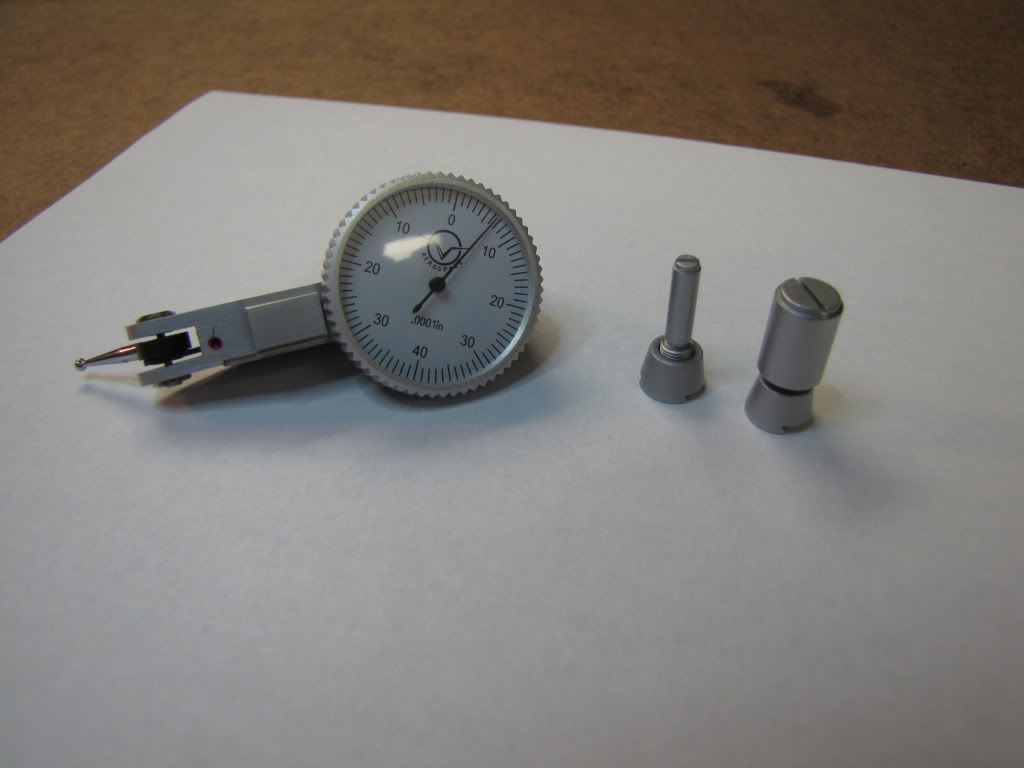
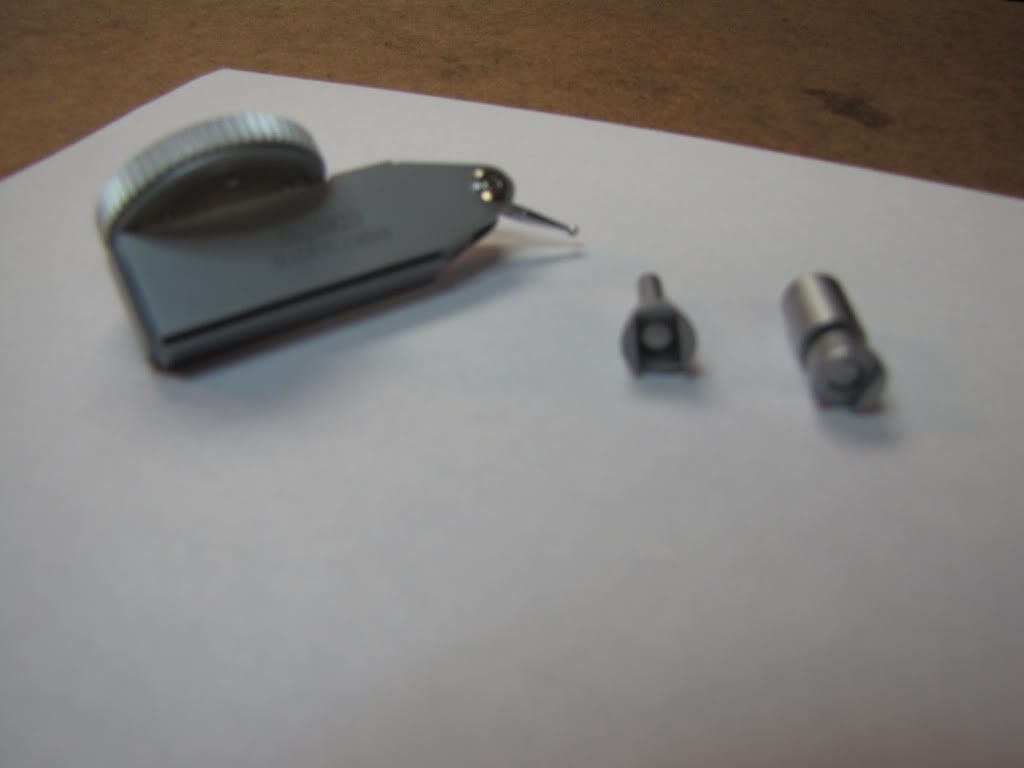
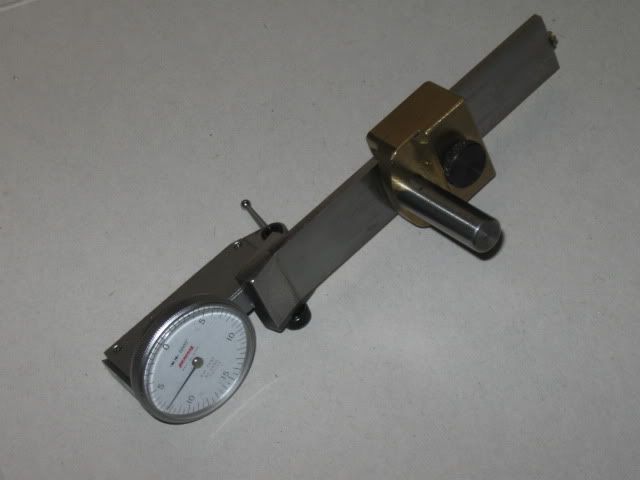
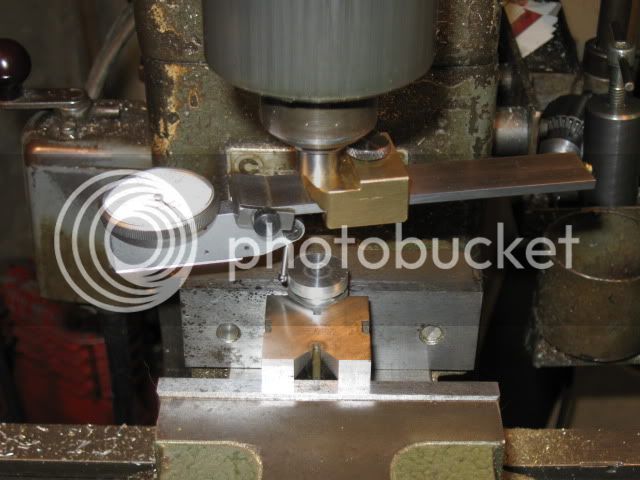
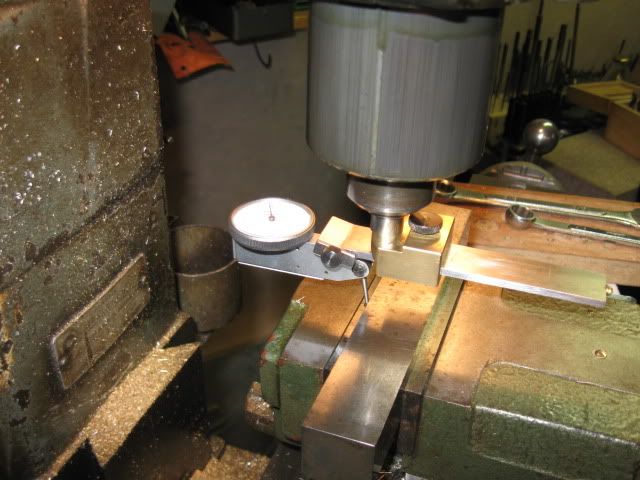


















































![DreamPlan Home Design and Landscaping Software Free for Windows [PC Download]](https://m.media-amazon.com/images/I/51kvZH2dVLL._SL500_.jpg)










